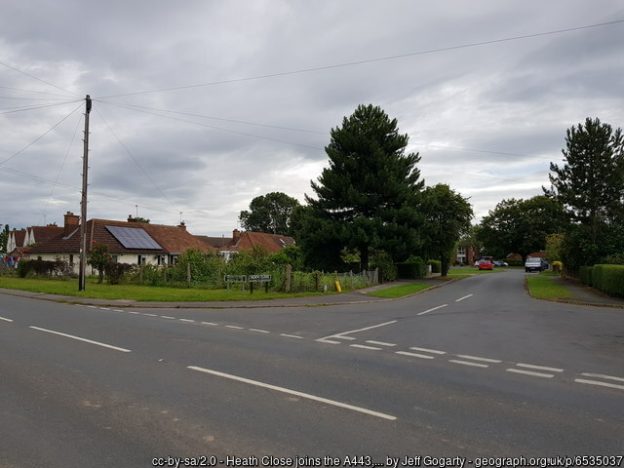(I am not sure that this one is ever going to see the light of day as a proper REF-able ‘output’, but I enjoyed writing something on aspects of the common law’s treatment of married women it for a conference on coverture in 2022, and I feel moved to put some of it ‘out there’, for anyone who feels inclined read it, so here we are: some marital musings)
‘Coverture’ is a word well known to legal historians: the explanation for many limitations placed upon married women, and sometimes something of an excuse to leave them out of consideration, and get on with telling the more agreeable story of rises, triumphs and men. Nevertheless, the last decade or so has seen some particularly keen excavation and questioning of the nature and place of ‘coverture’ in legal history. Building on that work, I have a few thoughts.
I am going to start in what might seem like fairly unpromising territory to anyone but the most obsessive medieval property law fan: pleading in relation to voucher to warranty. And if anyone needs a refresher on what voucher to warranty is, this is something which might happen in a land dispute: a defendant is calling on somebody to back him up, and say that he does actually have a claim to the land in question. Sometimes that backer-up, the ‘vouchee’, does not want to take on this potentially onerous responsibility, and might ‘counterplead’ (i.e. argue that he should not have to) and so there would be a trial within a trial, to sort out that matter.
We can see an example of this counterplea to voucher to warranty in a land case from Herefordshire from 1292 – a mort d’ancestor case, in which one party (Ralph de Toni) claims that he should have [seisin of] some land, currently held by Roger son of Richard de Hereford, because it was held by his (Ralph’s) aunt Margery at her death, and he is next in the conventional line of inheritance. Roger was not having it, and vouched to warranty Thomas, son and heir of William de St Omer. Why should Thomas have to warrant? Well, the story was that Roger’s father, Richard, had been granted the land by William de St Omer and Petronilla his wife, by a charter with a clause which said that William, Petronilla and their heirs would warrant Richard and his heirs – so they committed themselves and their heirs to supporting Richard and his heirs if the latter faced a legal challenge of this sort. Thomas did not want to warrant, though. He found fault with Roger’s pleading: pointing out that the charter was in the names of William and Petronilla, and though William was dead (and so was represented by Thomas), Petronilla was alive, and should also have been vouched, but had not been. Roger tried to say that it was fine to leave her out, and he had not made the sort of mistake which would mean his case could not succeed. His argument was that even though the charter was under names of both William and Petronilla, it only ‘had vigour’ under William’s name. Why? Because [and here comes the ‘coverture’ bit at last] Petronilla could not oblige herself by charter, as, at the relevant time, she fuit inter brachia Willelmi viri sui’ (was within the arms of William, her husband). It was found, however, that, in this case, the ‘‘in his arms so effaced and irrelevant’ argument did not win. At law this was a joint transfer, so both William’s representative and Petronilla should have been included. The immediate outcome was that this was a bad voucher and Thomas did not have to warrant Roger.[i]
There are other quite interesting aspects to this case, but let us focus on this idea, this formula, of a wife being ‘in her husband’s arms’, and unable to do things. It seems that this was not a complete ‘one-off’, nor a factual statement about Petronilla actually being within William’s arms at the key moment, but a juridical term: there was a similar usage in a French-language Year Book report, attributed to 1311, and to everyone’s favourite cantankerous early 14th C judge, Chief Justice Bereford. This was another voucher to warranty case, and, once again, a husband and wife had transferred some land to X, defendant in a land action, and X vouched only one party – here, the wife’s heir, the wife now being dead but the husband alive. It was argued – successfully – that both the husband and the wife’s heir should have been vouched, because the wife, who was, at the time, ‘enter ses bras’ could not make a transfer of land on her own.[ii] [Substantive point QI – both parties needed].
That is a lot of land law to get to [a fairly arcane legal point and] two little phrases. Why do I think these cases, and this ‘within his arms’ business, are interesting? Well, first of all, I think these examples show something of the contexts in which ‘coverture’ type questions could arise in medieval common law. These are hardly big, exciting cases dealing head-on with the patriarchy and the rights of women: the reports show us that these are instances of men arguing about land, looking for a technical mis-step in pleading or procedure. Nobody really cares about Petronilla in that 1292 case: she is a device. It seems important – telling – that ‘the coverture stuff’ quite often comes up on very small pleading points, not big ‘rightsy’ questions.
Secondly, there is the image itself: the wife in the husband’s arms. What does that specific image suggest, and how does it relate to existing scholarship on ‘coverture’? It seems to me to be very ambiguous: should we be seeing it as an embrace or a restraint? Should we be thinking vertically or horizontally? There are resonances with the formula in medieval ‘criminal’ law, in appeals (individual prosecutions) brought by a widow for the killing of her husband: until the later 14th century, she had to claim that he had died ‘in her arms’. The ‘in his arms’ formulation is a bit different to the better-known expressions relating to married people in medieval and later legal sources, with their ideas of unity or domination. ‘Within his arms’ seems to me to be more complex, and more obviously temporary. In my view, it reinforces the argument – made by others[iii] that the central idea of ‘coverture’, or the husband/wife relationship at common law was unsettled in the medieval period (though within male control, since the power in that embrace, to contain, or to release, was all with the man).
And does it matter, this argued-for unsettled nature of medieval ‘coverture’? Is this just some academic navel-gazing, disappearing up her own backside and furiously ‘nuancing’ things long gone? It does seem to me that it is important to keep making the point that some of the apparently monolithic, unchanging, institutions and ‘doctrines’ of the common law were not inevitable, nor did they descend, fully formed, without being adopted and adapted by individuals and groups with influence over the content of the law, who saw in them some advantage to themselves and their view of the way things should be. Throwing back the sometimes lazily-arranged covers, exposing the complexity the common law’s treatment of women, appears necessary, both to do what we can to understand the conditions (physical, legal, cultural) in which countless women lived their lives, and also to recognise the continuation into our own lives and times of some ways of talking about, thinking about, and behaving in, marriage and other domestic relationships.
And so, dearly beloved, will I continue on my obscure little way, going on about this women stuff, and possibly even using the word ‘patriarchy’ from time to time?
I will.
GS
30/9/2023
[iii] See, in particular, Married Women and the Law : Coverture in England and the Common Law World, edited by Tim Stretton and K. J Kesselring, McGill-Queen’s University Press, 2013 (editors’ very helpful introduction, and c. 2 (S.M. Butler).









